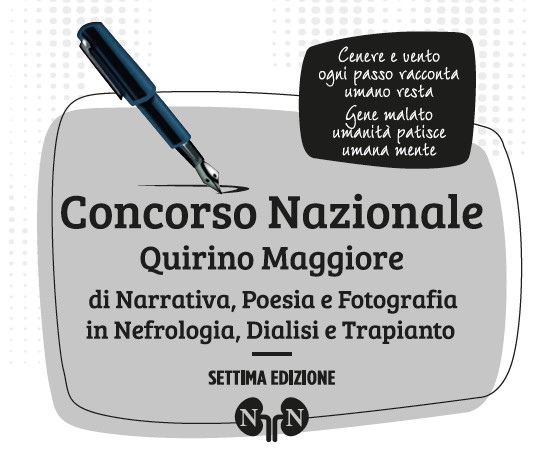Most read articles by the same author(s)
- Cristiano Magnaghi, Elena Brioni, Donato Leopaldi, Marisa Pegoraro, Giuseppe Vezzoli, Paolo Manunta, Maria Teresa Parisotto, Coronavirus and environment: a challenge for the planet and the health , Giornale di Clinica Nefrologica e Dialisi: Vol. 32 No. 1 (2020): January-December 2020
- Marisa Pegoraro, Maria Pia Zito, Patrizia Galeotti, Alessia Delalio, Francesco Rossi, Vincenza Guadagno, Nursing competences , Giornale di Clinica Nefrologica e Dialisi: Vol. 26 No. 1 (2014): January-March 2014
- Marisa Pegoraro, Controversy BH , Giornale di Clinica Nefrologica e Dialisi: Vol. 26 No. 1 (2014): January-March 2014
- Francesco Burrai, Marisa Pegoraro, Maria Pia Zito, Mariella Cadeddu, Randomized Controlled Pilot Study on the Effects of a Release Silver Medication in Patients Cannulated with Button Hole Technique: Experimental Protocol , Giornale di Clinica Nefrologica e Dialisi: Vol. 29 No. 1 (2017): January-March 2017
- Alessia Delalio, Maria Pia Zito, Marisa Pegoraro, Patients' care excellence and peritoneal dialysis , Giornale di Clinica Nefrologica e Dialisi: Vol. 26 No. Suppl. 5 (2014): Dialisi peritoneale, Dialisi marginale?
- Marisa Pegoraro, Buttonhole Technique: The Answers to the Most Common Questions , Giornale di Clinica Nefrologica e Dialisi: Vol. 26 No. 4 (2014): October-December 2014
- Marisa Pegoraro, Nephrological Nursing and random coincidences , Giornale di Clinica Nefrologica e Dialisi: Vol. 29 No. 4 (2017): October-December 2017
- Marisa Pegoraro, The Dialysis Vascular Access Team: where there is a will there is a way… or not? , Giornale di Clinica Nefrologica e Dialisi: Vol. 29 No. 2 (2017): April-June 2017
- Marisa Pegoraro, The Buttonhole Technique: What's New? , Giornale di Clinica Nefrologica e Dialisi: Vol. 25 No. 2 (2013): April-June 2013
- Marisa Pegoraro, Contumacia….? , Giornale di Clinica Nefrologica e Dialisi: Vol. 27 No. 3 (2015): July-September 2015











